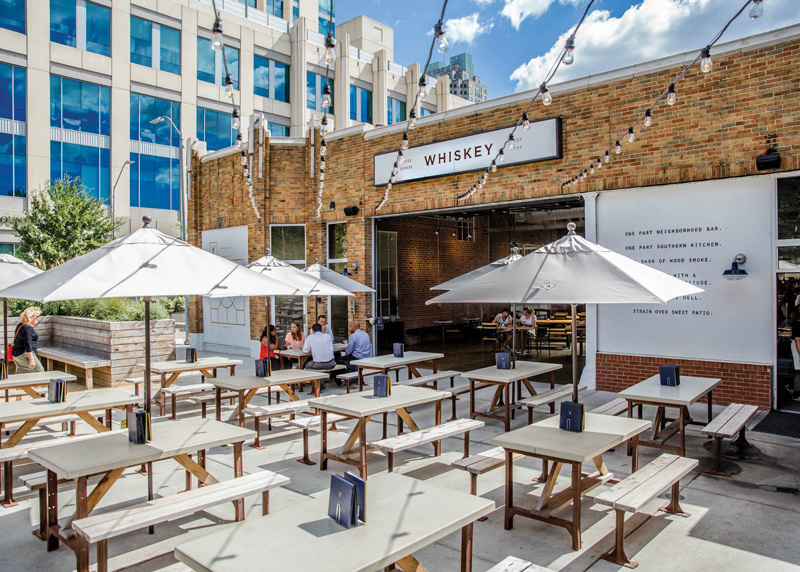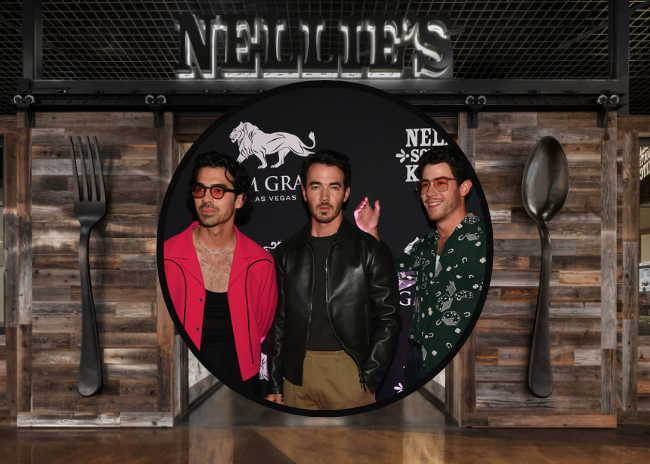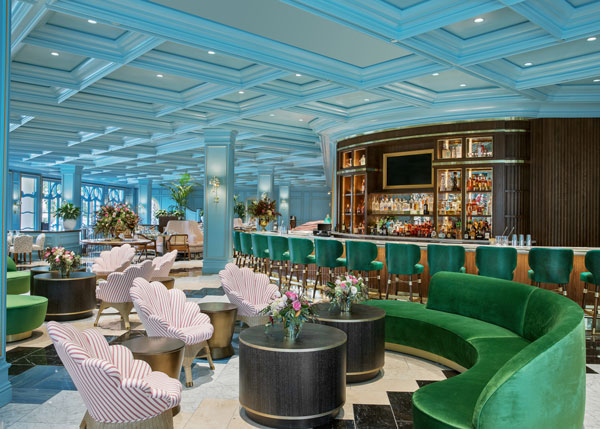Mirabella restaurant in the Fontainebleau Hotel Miami Beach has a strong sense of place but in this case it’s not Miami Beach but coastal southern Italy, especially Positano, the designers hoped to evoke.
Fontainebleau Hotel Miami Beach is one of Florida’s most historically and architecturally significant hotels, recognized by the American Institute of Architects and included in the U.S. National Register of Historic Places. The history of the hotel itself, which was built in 1954, the background of its original architect Morris Lapidus, and the golden age of Miami glamour were all influences on the design.
The sense of place here is very subtle and largely comes through “in the joy and energy and vibrancy,” says Sadie Bengali, associate FF&E designer, David Collins Studio, London. “It comes out in our color palette, which is strong and bold. You don’t want to make it overt and realistic in that way. Our aim has been to draw those subtle influences. The strong color punches were evidence of that too, and providing that relaxed glamour and sophisticated feel.”
The colors in the restaurant include citronella yellow and terracotta red — drawn from Italy — and the coastal influence and lapis blue from Miami’s beaches.
Mirabella also contains many disparate seating areas “because you’re taking your guests on a journey,” says Bengali. “Every space has an identity, and you experience a sequence and something different as you move through the space.”
There’s a dining area highlighting the glitz and glamor of the golden age, with red and blue leather and suede seats, focal columns wrapped in blue handmade baize tiles from Italy, custom chandeliers, scarlet red and lapis blue lacquer, and hand-painted Dedar fabric, featuring an abstract palm tree print, which adds a touch of Florida’s lush flora.
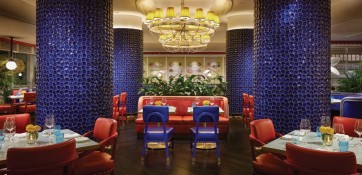
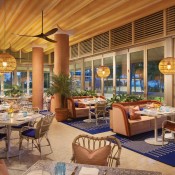
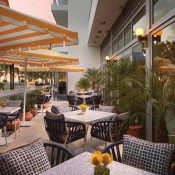
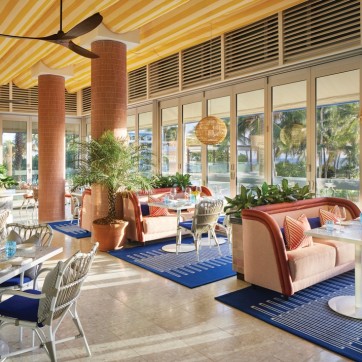
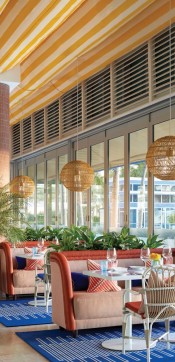
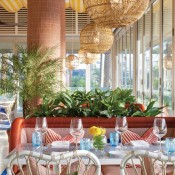
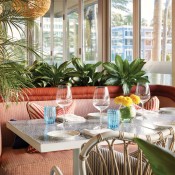
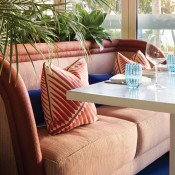
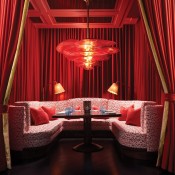

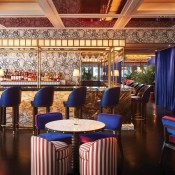
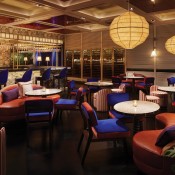
Mirabella transports guests to coastal Southern Italy through color drawn from nature and architecture, as well as Miami, with blues reflecting the local waters. Images courtesy of Mirabella
Banquettes feature a double rolled detail at the top that wraps down the sides, framing the seating. “It was carefully designed to create interest with contrast fabric details, which provide a residential feel,” Bengali explains. The lighting within this space was a playful combination of texture, design and mood. “We wanted to create a layered look, using different natural fiber materials mixed with colored metals to evoke a sense of a relaxed and eclectic atmosphere.”
An adjacent space around the perimeter feels like a garden restaurant, with wicker chairs, elegant sand-colored couches, and a striped ceiling canopy. Blue woven wool rugs, seat cushions and throw pillows bring some fun color to the space.
There’s patio dining with striped umbrellas and potted palms and navy and white seats. And the bar area echoes the blue and red of the dining colors in seating — some striped — and a standout bar featuring a backbar with mosaic tiles in a circular pattern, retained from the former restaurant but given a new identity, cafe curtains in ombre off-white and pale-yellow sheer fabric.
A private nook that seats six serves as a social-media-friendly element. It’s enclosed in rich terracotta colored linen swagged curtains that “provide the perfect inviting, yet eye-catching backdrop,” says Bengali. At the center is a curved red and white banquette topped by a custom pink tinted chandelier, which is “an elegant, yet bold sculptural piece which completes the statement look for the niche,” says Bengali. “It’s a bold statement and a little hideaway — part of the bar yet separate, too.”
Layered lighting also highlights or downplays certain areas to accentuate the moods and add character. Glass lily pad-style chandeliers in the dining room offer a subtle pink glow.
Most of the furniture was designed by David Collins Studio. “It’s all about the layering and the little details,” Bengali says. “We wanted lots of different textures.” She also wanted the space to be flexible enough for the three meals the hotel serves.
The restaurant has many memorable moments including the red dining area, the lily pad chandeliers, the blue tile columns, and a wall covered in hand-painted shells. “Living in an Instagram time you have to have these wow moments,” says Bengali.













